Anyone who’s ever enjoyed a bowl of strawberries near a wooden table or prepared a fresh fruit salad on a wooden cutting board is probably familiar with the sudden panic that occurs when strawberry juice ends up where it doesn’t belong. The vivid red pigment of strawberries can seep into wood with surprising speed, leaving behind stubborn marks that seem impossible to remove.
While these stains can be distressing, it’s important to know that with the right techniques and timing, you can often restore your wood to its original beauty. This guide provides you with effective methods on how to get strawberry stain out of wood and restore your furniture’s appearance, no matter the finish or age of the stain. Whether you need a quick fix for a fresh spill or a strategy for set-in discoloration, you’ll find clear, step-by-step solutions tailored to both finished and unfinished wood.
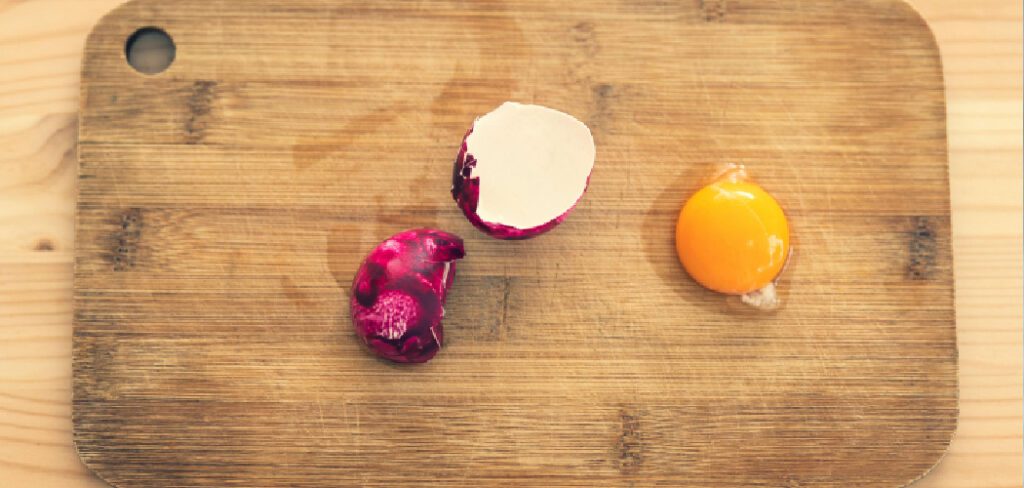
Understanding Wood and Stains
Why Strawberries Stain So Easily
Strawberries get their vibrant color from natural pigments called anthocyanins. These organic compounds are not just responsible for the berry’s appetizing red hue—they’re also highly adept at binding to porous materials, like the fibers in wood. In addition, strawberry juice is naturally acidic, which can help the stain penetrate even deeper into unfinished or unsealed surfaces. When juice is allowed to sit, it works its way past a wood’s surface, resulting in fast and sometimes deep staining, especially if the wood is light or unprotected.
The Importance of Wood Finish
The nature of the wood’s finish significantly affects the cleaning approach. Finished, or sealed, wood has a protective barrier—often a layer of varnish, lacquer, shellac, or polyurethane—that helps resist moisture and stains from setting into the grain. Unfinished (raw) wood lacks this shield; as a result, liquids are absorbed quickly and stains become much more tenacious. Understanding the type of wood you’re dealing with will determine your best cleaning method, as aggressive techniques that are safe for raw wood could damage a delicate finish.
Immediate Action: First Steps for a Fresh Stain
Blot, Don’t Wipe
Reacting quickly is crucial when dealing with fresh strawberry stains. The moment you notice a spill, take a clean, dry cloth or sturdy paper towel and gently blot the area. Press firmly enough to lift as much of the juice as possible, but avoid rubbing or wiping. Wiping can work the pigment deeper into the wood grain and cause the stain to spread, making it more difficult to address. The goal is to lift surface moisture before it has a chance to set.
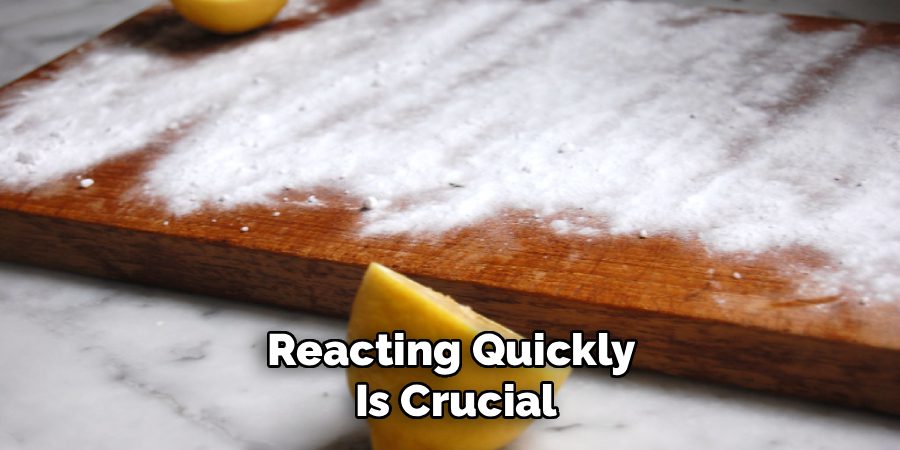
Initial Cleaning with Mild Soap
After you’ve blotted the stain, mix a few drops of dish soap with warm water to create a gentle cleaning solution. Dampen a soft, lint-free cloth with the soapy water—do not saturate it, as excess water can damage wood—and gently dab the affected area. Work from the outside in, regularly rinsing the cloth and reapplying fresh solution as needed. This process can help lift residual stain particles from finished wood. Once you’re satisfied, use a separate, dry cloth to remove any remaining moisture, then let the area air dry completely before assessing the stain’s visibility.
Method 1: The Baking Soda Paste Technique
Creating the Cleaning Paste
For stains that have already started to set or for lighter discoloration, a baking soda paste is often an effective next step. Combine three parts baking soda with one part water in a small container, stirring until you achieve a thick, spreadable consistency. Baking soda is mildly abrasive and naturally absorbent, making it ideal for gently drawing stains out of wood fibers without damaging the surface.
Application and Removal
Using your finger or a soft cloth, apply a generous layer of the baking soda paste directly over the stain. Allow the paste to sit for at least 30 minutes to an hour; this gives it time to absorb and lift the strawberry pigment from the wood. In humid environments or on stubborn stains, you may let it sit longer, checking regularly to ensure the paste doesn’t dry out too much. Once the waiting period is over, wipe away the paste with a clean, damp cloth.
Examine the spot under good lighting—if some of the stain remains, you can repeat the process as needed. For finished woods, always test the paste on an inconspicuous area first to ensure it won’t dull or cloud the surface.
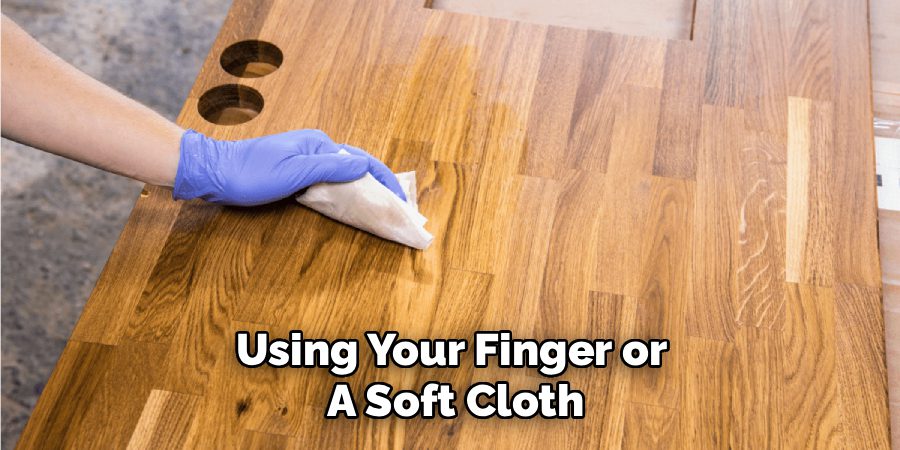
Method 2: Using Vinegar for Stubborn Stains
The Power of White Vinegar
If the baking soda method doesn’t fully remove the strawberry stain, white vinegar provides a gentle but effective option. The natural acidity of vinegar can help break down the fruit pigments, making it useful for more persistent discoloration. Create a solution by mixing equal parts distilled white vinegar and water.
Safely Applying the Vinegar Solution
Lightly dampen a clean cloth with your vinegar solution and gently dab the stain, once again working from the outside toward the center to avoid spreading the mark. Take care not to saturate the wood; the goal is to deliver a controlled amount of acidity directly where it’s needed. Let the solution sit for three to five minutes, but never allow it to pool or soak into the surface.
After this time, immediately wipe the area with a second clean, damp cloth to neutralize the acid and protect the wood from long-term damage. Dry the area thoroughly. For stains on finished wood, always spot test the solution before proceeding, as vinegar can sometimes react with certain sealants and finishes.
How to Get Strawberry Stain Out of Wood: on Unfinished Surfaces
The Challenge of Raw Wood
Unfinished wood is significantly more challenging to clean than its sealed counterpart. It’s grain readily soaks up liquid, allowing stains to penetrate more deeply. While it’s possible to remove or lighten the mark, it often requires patience and may not always restore the wood to a perfect, like-new state. Still, the following approach gives you your best shot.
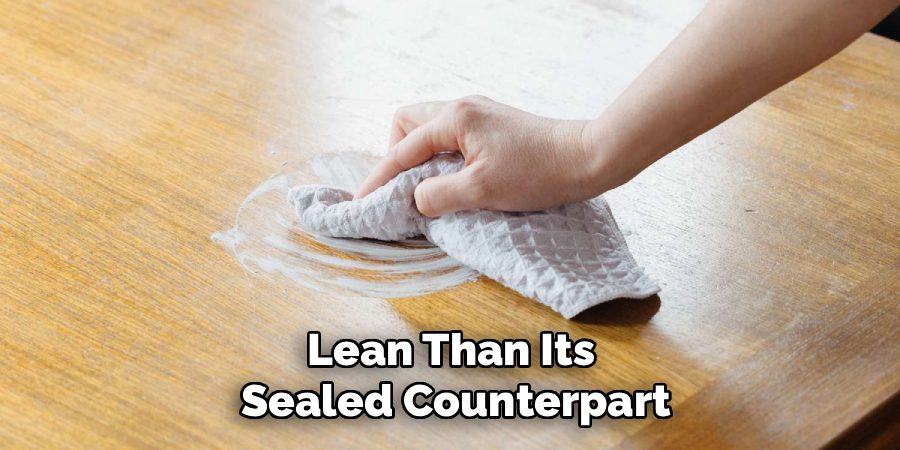
Using Fine-Grit Sandpaper
When strawberry stains persist on unfinished wood, gentle sanding can help lift them out. Choose a fine-grit sandpaper, such as 220-grit, to avoid creating visible scratches on the surface. Begin by sanding the stained area lightly, always following the direction of the wood grain. Periodically wipe away the dust to monitor your progress.
It’s important not to oversand, as this can leave a noticeable dip or discoloration. If the stain proves stubborn, you can alternate sanding with reapplication of the baking soda paste or vinegar solution. Once you’ve removed as much of the mark as possible, clean away all dust with a tack cloth before considering any further refinishing or sealing.
Dealing with Dried, Set-In Stains
Assessing an Old Stain
Old strawberry stains can be deceiving, lurking beneath a layer of surface color or darkening over time. To assess how deeply the stain has penetrated, inspect the area under good light and feel for any differences in texture—deep stains may leave the wood feeling rough. Recognizing the depth will help you decide if further cleaning or more intensive treatment is warranted. Be prepared that set-in stains are less likely to disappear completely, but with patience, you can often minimize their appearance dramatically.
Advanced Techniques to Consider
For stains that resist all previous efforts, stronger chemical solutions such as oxalic acid or commercial wood bleaches can be considered. These products are potent and should always be used according to the manufacturer’s directions. Wear gloves, ensure excellent ventilation, and avoid skin or eye contact. Never apply these chemicals without first patch-testing a hidden area of the wood to check for adverse reactions.
Apply according to instructions, wait for the required time, and rinse thoroughly with clean water before allowing the area to dry. Remember: these options are best reserved for severe discoloration or for wood that you plan to refinish afterward, since strong chemicals can strip or alter existing finishes.
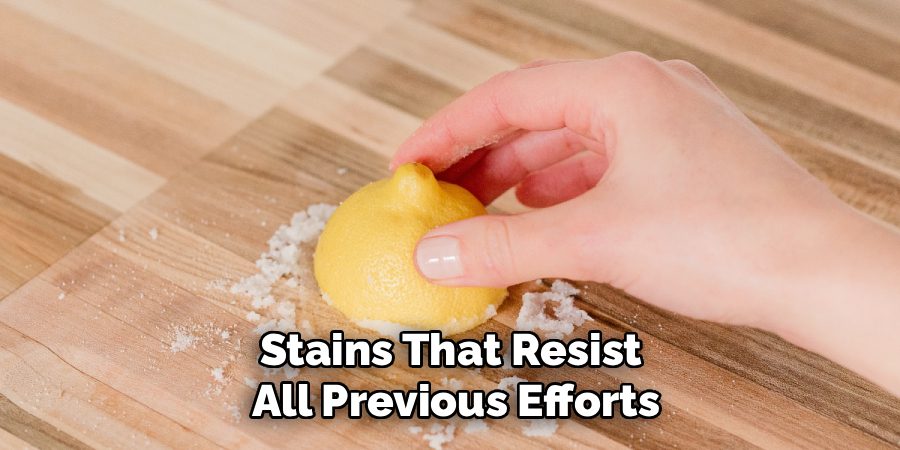
Restoring the Wood’s Finish After Stain Removal
Cleaning the Surface
Once the stain has been lifted, it’s vital to remove any remaining cleaning agents and neutralize the treated spot. Wipe the area thoroughly with a damp cloth, ensuring you clear away all traces of baking soda, vinegar, or other solutions. Allow the wood to dry completely—any moisture left trapped under new sealant or oil can cause further issues or discoloration.
Applying a New Finish
After cleaning and drying, you may notice that the affected area looks lighter or duller than the surrounding wood, especially if aggressive cleaning or sanding was necessary. To restore uniformity and protect against future stains, apply a matching wood oil, wax, or sealant. Use a soft cloth to work a small amount of the product into the treated area, blending it outward into the existing finish. Allow it to dry and cure according to the manufacturer’s instructions, then buff gently if needed. For cutting boards or food-contact surfaces, always use a food-safe oil or sealant.
Preventative Measures for Future Protection
The Importance of Sealing Wood
The best long-term solution for avoiding fruit stains is to properly seal all exposed wood, especially on surfaces where spills are likely. Modern, food-safe sealants and oils not only protect against moisture but also make future cleanups easier. For kitchen items, choose mineral oil or specialized cutting board finishes. For furniture, consider options like polyurethane, varnish, or professional-grade waxes that provide robust and lasting protection.
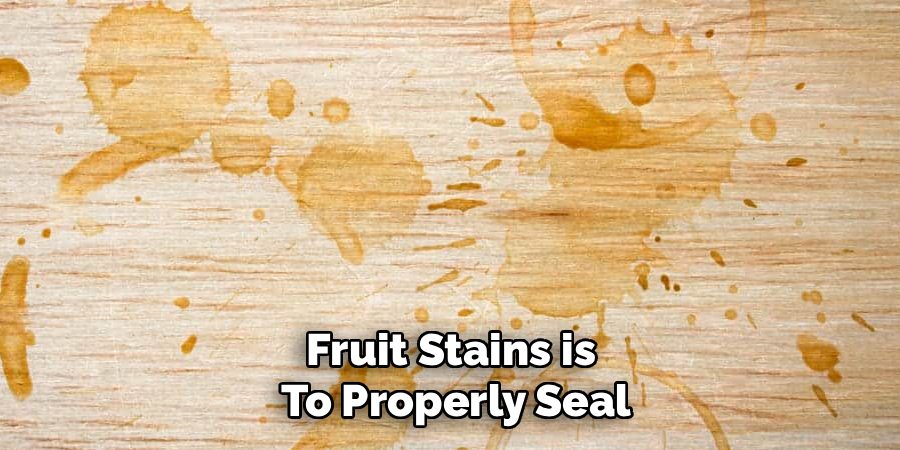
Quick Response is Key
Perhaps the simplest and most effective defense against stains is rapid action. Wipe up spills as soon as they occur and avoid letting liquids pool or sit for extended periods. Make a habit of using coasters, placemats, or tablecloths where feasible, and encourage family and guests to do the same. For areas with heavy use, invest in easy-to-clean finishes or protective coverings that match your household’s routines.
Conclusion
Strawberry stains on wood can seem intimidating, but they are far from impossible to handle. Understanding how wood finish affects stain removal, opting for the right cleaning technique, and acting quickly can make a significant difference in outcomes. Whether using mild soap, baking soda paste, or more intensive techniques for aged marks, persistence is often rewarded with much-improved results.
Don’t forget that a little preventative care goes a long way—sealing wood surfaces and cleaning up spills promptly are your best insurance against future stains. With these methods, you now know how to get strawberry stain out of wood, ensuring your wooden pieces remain beautiful for years to come. When faced with spills, remain calm, follow these steps, and your wood will continue to shine in your home.
About
Team Woodlix is a distinguished figure in the world of Diy design, with a decade of expertise creating innovative and sustainable Diy solutions. His professional focus lies in merging traditional craftsmanship with modern manufacturing techniques, fostering designs that are both practical and environmentally conscious. As the author of diy, Woodlix delves into the art and science of furniture-making, inspiring artisans and industry professionals alike.
Education RMIT University
(Melbourne, Australia) Associate Degree in Design (Team Woodlix) Focus on sustainable design, industry-driven projects, and practical craftsmanship. Gained hands-on experience with traditional and digital manufacturing tools, such as CAD and CNC software.
Nottingham Trent University
(United Kingdom) Bachelor’s in diyfastly.com and Product Design (Honors) Specialized in product design with a focus on blending creativity with production techniques. Participated in industry projects, working with companies like John Lewis and Vitsoe to gain real-world insights.
Publications and Impact
In diy, Team Woodlix his insights on indoor design processes, materials, and strategies for efficient production. His writing bridges the gap between artisan knowledge and modern industry needs, making it a must-read for both budding designers and seasoned professionals.
